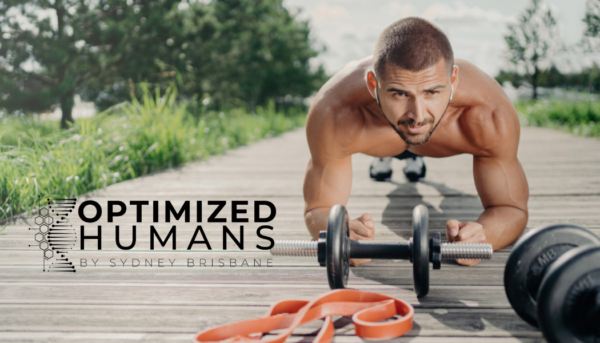As summer sets in, taking your workouts outdoors can be an invigorating way to enjoy the season while staying fit. Whether you’re running through the park, cycling along scenic routes, or practicing yoga on the beach, outdoor exercises offer a refreshing change from the gym. The Optimized Humans program is designed to help you make the most of your outdoor workouts, providing personalized guidance, tracking progress, and offering tips for various environments. Here’s how you can optimize your training with our program.
Benefits of Outdoor Workouts
Outdoor workouts come with numerous benefits that can enhance both your physical and mental well-being:
- Fresh Air and Sunshine: Exercising outdoors exposes you to fresh air and natural light, boosting your mood and providing essential vitamin D.
- Varied Terrain: Running or cycling on varied terrain can challenge your muscles differently, improving strength and endurance.
- Mental Health Boost: Nature has a calming effect, reducing stress and anxiety, and improving overall mental health.
- Engagement and Fun: Outdoor workouts can be more engaging and fun, keeping you motivated and helping you stick to your fitness routine.
Tips for Outdoor Exercises
To get the most out of your outdoor workouts, consider these tips:
- Plan Your Route: Choose safe and scenic routes for running, cycling, or walking. Familiarize yourself with the area and ensure it’s suitable for your fitness level.
- Dress Appropriately: Wear moisture-wicking clothing to keep cool and comfortable. Don’t forget a hat and sunglasses to protect yourself from the sun.
- Stay Hydrated: Bring water with you and take regular breaks to stay hydrated, especially during intense activities.
- Warm Up and Cool Down: Begin with a dynamic warm-up to prepare your muscles and end with a cool-down to prevent stiffness and soreness.
- Be Weather Aware: Check the weather forecast and plan your workouts accordingly. Avoid extreme heat and be prepared for sudden weather changes.
Optimized Humans: Your Outdoor Workout Companion
The Optimized Humans app is your ultimate companion for outdoor workouts, offering features that guide and track your progress in various environments:
- Personalized Workout Plans: The app creates customized workout plans based on your fitness goals, whether you’re focusing on cardio, strength, flexibility, or a combination of all three.
- GPS Tracking: Track your runs, walks, and cycling routes with GPS. The app logs distance, speed, and elevation, giving you detailed insights into your performance.
- Voice Coaching: Receive real-time coaching cues to keep you motivated and ensure you’re maintaining proper form. Voice coaching can also remind you to hydrate and take breaks.
- Progress Monitoring: Monitor your progress with detailed statistics and performance summaries. The app tracks your improvements and adjusts your workout plans accordingly.
- Community Challenges: Join community challenges and compete with other users. This adds a fun, social element to your workouts, keeping you motivated and accountable.
Outdoor Workout Ideas
Here are some outdoor workout ideas to try with the guidance of the Optimized Humans app:
- Running and Jogging: Use the app’s GPS tracking and voice coaching features to improve your running technique and endurance. Set goals for distance, time, or pace and track your progress.
- Cycling: Plan scenic cycling routes and monitor your speed, distance, and elevation. The app provides personalized cycling workouts to help you build strength and stamina.
- Bodyweight Exercises: Perform bodyweight exercises like push-ups, squats, lunges, and planks in your backyard or a local park. The app offers guided routines and ensures you’re performing each move correctly.
- HIIT Workouts: High-Intensity Interval Training (HIIT) can be done anywhere. Follow the app’s HIIT workouts that combine short bursts of intense exercise with periods of rest or low-intensity activity.
- Yoga and Stretching: Practice yoga and stretching routines on the beach, in a park, or in your backyard. The app provides guided sessions to improve flexibility and relaxation.
Conclusion
Optimizing your outdoor workouts with the Optimized Humans app ensures you stay fit, motivated, and engaged all summer long. By following personalized workout plans, tracking your progress, and utilizing the app’s features, you can enjoy the benefits of outdoor exercises while achieving your fitness goals. Embrace the great outdoors, breathe in the fresh air, and let the Optimized Humans program guide you to a healthier, happier you. Download the app today and take your workouts to the next level, wherever your adventures take you.
Exclusive OFFER For YOU!
Unlock your potential with a complimentary 14-day trial of our #OptimizedHumans program! 🚀 Dive into customized workouts, expert guidance, and transformative resources designed to enhance your physical and mental well-being. 💪 Join hands with Sydney and our dedicated team to embark on a personalized fitness journey tailored just for you. Together, we’ll optimize your health and set you on the path to success. Plus, discover how we collaborate with companies to boost employee efficiency through tailored workout and nutrition plans. Don’t wait any longer—start your journey to optimal living today at optimizedhumans.life!
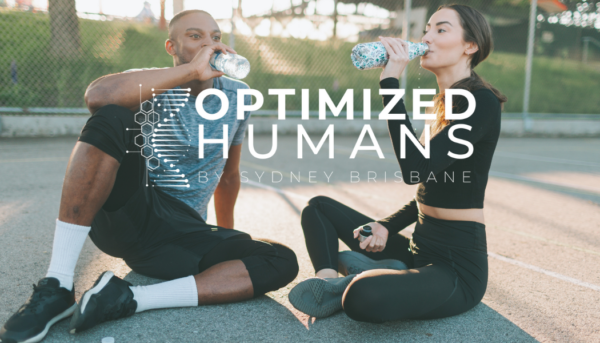
As the summer sun blazes, your workouts might feel more intense, and your body will undoubtedly work harder. Proper post-workout recovery becomes even more crucial during hot weather to ensure your body recovers efficiently and remains injury-free. The Optimized Humans program offers expert advice and resources to help you optimize your recovery. Here are the best practices for post-workout recovery in hot weather, including stretching routines and nutrition tips available in our program.
Hydration is Key
One of the most important aspects of recovery, especially in hot weather, is staying hydrated. Your body loses more fluids through sweat, so replenishing these is essential.
1. Rehydrate Immediately: Drink plenty of water immediately after your workout. Aim for at least 16-24 ounces of water within the first 30 minutes post-exercise.
2. Electrolyte Balance: Consuming drinks with electrolytes can help replenish lost salts and minerals. Consider coconut water or specially formulated electrolyte drinks.
3. Monitor Your Hydration: Check the color of your urine; a pale yellow indicates proper hydration, while darker urine suggests you need to drink more fluids.
Effective Cooling Down
Cooling down helps bring your heart rate back to normal and prevents muscle stiffness. The Optimized Humans program offers guided cool-down routines to ensure you recover properly.
1. Gradual Cool-Down: Spend at least 5-10 minutes walking or performing low-intensity movements to gradually reduce your heart rate.
2. Static Stretching: Incorporate static stretches targeting the major muscle groups you worked during your exercise. Hold each stretch for 20-30 seconds to improve flexibility and reduce muscle tension.
3. Deep Breathing: Practice deep breathing exercises to promote relaxation and aid in the recovery process. This helps lower your heart rate and can reduce post-workout stress.
Stretching Routines for Optimal Recovery
Stretching is a crucial part of the recovery process, especially after intense workouts in hot weather. The Optimized Humans app includes comprehensive stretching routines designed to enhance recovery.
1. Full-Body Stretch Routine: Focus on a full-body stretching routine that targets all major muscle groups. This can help improve flexibility, reduce muscle soreness, and prevent injuries.
2. Yoga and Mobility Work: Incorporate yoga and mobility exercises to enhance your recovery. These practices help improve joint mobility, reduce muscle stiffness, and promote relaxation.
3. Foam Rolling: Use a foam roller to release muscle tension and improve blood flow to your muscles. The app provides guided foam rolling exercises for different muscle groups.
Nutrition for Recovery
What you eat after your workout plays a significant role in your recovery. The Optimized Humans program offers personalized nutrition plans to help you refuel and repair your body.
1. Protein Intake: Consume a protein-rich snack or meal within 30-60 minutes post-workout to support muscle repair and growth. Options include protein shakes, Greek yogurt, or a turkey sandwich.
2. Carbohydrates for Energy: Pair your protein with carbohydrates to replenish glycogen stores and provide energy for recovery. Good options include fruits, whole grains, and vegetables.
3. Healthy Fats: Include healthy fats in your post-workout meal to support overall recovery and reduce inflammation. Avocados, nuts, and olive oil are excellent choices.
4. Antioxidant-Rich Foods: Consume foods rich in antioxidants to combat oxidative stress caused by intense exercise. Berries, leafy greens, and nuts are great options.
Rest and Sleep
Adequate rest and quality sleep are essential for optimal recovery. The Optimized Humans program provides tips and techniques to improve your sleep hygiene.
1. Prioritize Sleep: Aim for 7-9 hours of sleep each night to allow your body to recover fully. Sleep is when your body repairs muscles, consolidates memory, and releases growth hormones.
2. Create a Relaxing Environment: Ensure your sleep environment is cool, dark, and quiet. Consider using blackout curtains, earplugs, or a white noise machine to enhance sleep quality.
3. Consistent Sleep Schedule: Maintain a consistent sleep schedule by going to bed and waking up at the same time each day, even on weekends.
Conclusion
Recovering properly after workouts, especially in hot weather, is essential to maintain your fitness progress and overall well-being. By following these best practices for hydration, cooling down, stretching, nutrition, and rest, you can optimize your recovery and continue to perform at your best. The Optimized Humans program is here to support you with personalized recovery plans, expert advice, and comprehensive resources. Embrace these recovery techniques to stay healthy, energized, and ready for your next workout, no matter how high the temperature rises.
Exclusive Deal For You!
Unlock your potential with a complimentary 14-day trial of our #OptimizedHumans program! 🚀 Dive into customized workouts, expert guidance, and transformative resources designed to enhance your physical and mental well-being. 💪 Join hands with Sydney and our dedicated team to embark on a personalized fitness journey tailored just for you. Together, we’ll optimize your health and set you on the path to success. Plus, discover how we collaborate with companies to boost employee efficiency through tailored workout and nutrition plans. Don’t wait any longer—start your journey to optimal living today at optimizedhumans.life!

June, a month dedicated to unleashing the full potential of our brainpower and igniting awareness for Alzheimer’s disease. As we embark on this journey of enlightenment and advocacy, let’s explore how we can channel our collective energy to raise awareness, support research, and empower those affected by Alzheimer’s. Join us as we delve into actionable strategies to make a difference this Alzheimer’s Awareness Month.
Raising Awareness:
Awareness is the first step towards meaningful change. Spread the word about Alzheimer’s disease and its impact on individuals, families, and communities. Share informative resources, personal stories, and advocacy initiatives on social media platforms, in your local community, and among your networks. By raising awareness, we can shine a light on Alzheimer’s and inspire others to join the fight.
Supporting Research:
Research is the cornerstone of progress in the fight against Alzheimer’s. Get involved in fundraising events, volunteer opportunities, and advocacy campaigns to support organizations dedicated to Alzheimer’s research. Your contributions can fund groundbreaking studies, clinical trials, and innovative treatments that bring us closer to a world without Alzheimer’s.
Empowering Those Affected:
Alzheimer’s affects millions of individuals and their loved ones worldwide. Show your support by offering compassion, understanding, and practical assistance to those living with Alzheimer’s and their caregivers. Volunteer at local memory care facilities, participate in support groups, or simply lend a listening ear to someone in need. Your kindness and empathy can make a world of difference in the lives of those affected by Alzheimer’s.
Taking Action for Change:
Action speaks louder than words. Advocate for policy changes, increased funding for Alzheimer’s research, and improved access to care and support services. Write letters to lawmakers, participate in advocacy events, and engage with advocacy organizations to amplify your voice and drive meaningful change at local, national, and global levels.
As we ignite awareness for Alzheimer’s this June, let’s unleash the full power of our brainpower to make a difference. By raising awareness, supporting research, empowering those affected, and taking action for change, we can create a future where Alzheimer’s no longer robs individuals of their memories and dignity. Together, let’s stand united in the fight against Alzheimer’s and ignite a spark of hope for generations to come.
Thank you for taking this journey with us. Hopefully this has made you more aware of the necessity of good health. If you can make an impact throughout Alzheimer’s and Brain Awareness Month and Maximize Your Human Potential!

We are in the third week battling against Alzheimer’s and cognitive decline takes center stage. In this month dedicated to raising awareness, let’s explore how we can harness the power of mind over matter to combat these formidable adversaries. Join us as we dive into effective strategies to preserve cognitive function and champion brain health.
Navigating Alzheimer’s:
Alzheimer’s disease poses a significant challenge to individuals and communities worldwide. However, armed with knowledge and determination, we can navigate this journey with resilience. Explore treatment options such as cognitive enhancers and lifestyle interventions to manage symptoms and enhance quality of life. Additionally, participate in clinical trials to contribute to the advancement of Alzheimer’s research and potential breakthroughs.
Fueling Brain Resilience:
Just as a car needs fuel to run smoothly, our brains require nourishment to function optimally. Adopt a brain-healthy diet rich in nutrients like antioxidants, omega-3 fatty acids, and vitamins B and D. Incorporate foods such as fatty fish, leafy greens, nuts, and berries to support cognitive resilience and protect against age-related cognitive decline.
Empowering Early Detection:
Early detection is critical in the fight against Alzheimer’s and cognitive decline. Embrace the power of blood tests to identify biomarkers associated with brain health and cognitive function. Routine screenings for cholesterol, glucose, and inflammation levels can provide valuable insights and prompt proactive interventions to mitigate risk factors and promote brain resilience.
Insights from Genetic Profiling:
Genetic profiling offers personalized insights into individual susceptibility to Alzheimer’s disease and cognitive decline. By understanding genetic risk factors, individuals can implement targeted interventions to optimize brain health and reduce the likelihood of developing cognitive impairments. Explore lifestyle modifications, including regular exercise, stress management, and cognitive stimulation, to bolster brain resilience and support overall well-being.
Conclusion:
As we embark on June’s battle against Alzheimer’s and cognitive decline, let’s remember that mind over matter can be a powerful force for change. By navigating Alzheimer’s with resilience, fueling brain resilience with a nutrient-rich diet, empowering early detection through blood tests, and gaining insights from genetic profiling, we can tilt the odds in favor of cognitive vitality. Together, let’s embrace the challenge and pave the way for a future where cognitive health flourishes.
Stay tuned for our last actionable insights and tips throughout Alzheimer’s and Brain Awareness Month!
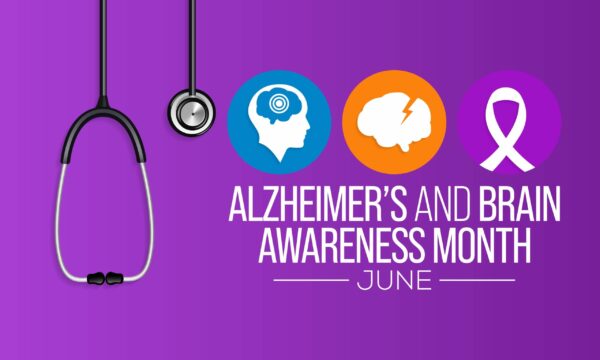
In the midst of June’s fervor for Alzheimer’s awareness, it’s time to recognize that memory matters. This month serves as a rallying cry to join the movement for brain health and take proactive steps to safeguard cognitive function. Let’s delve into practical strategies to champion brain health and honor the importance of memory in our lives.
Prioritizing Brain Health:
Maintaining brain health is crucial for preserving cognitive function and warding off conditions like Alzheimer’s disease. Engage in activities that stimulate the mind, such as puzzles, reading, and learning new skills. Physical exercise is also essential, as it enhances blood flow to the brain and promotes the growth of new brain cells. Make regular exercise a cornerstone of your routine to support long-term brain health.
Nutritional Support for the Brain:
Nutrition plays a pivotal role in brain health. Adopt a brain-boosting diet rich in fruits, vegetables, whole grains, and lean proteins. Incorporate foods high in antioxidants, such as berries, nuts, and leafy greens, to combat oxidative stress and protect brain cells from damage. Additionally, consider supplements like vitamin D and magnesium, which have been linked to improved cognitive function and mood regulation.
Harnessing the Power of Blood Tests:
Blood tests offer a window into our brain health, providing valuable insights for early detection and intervention. Routine blood screenings can assess cholesterol levels, blood sugar levels, and inflammatory markers, which impact brain health. Monitoring these biomarkers allows for timely intervention to mitigate risk factors and optimize brain function.
Insights from Genetic Testing:
Genetic testing empowers individuals to understand their unique risk factors for Alzheimer’s disease. By identifying genetic predispositions early on, individuals can implement personalized strategies to reduce risk and promote brain health. Embrace lifestyle modifications such as maintaining a healthy weight, managing stress, and prioritizing quality sleep to support overall well-being and cognitive vitality.
Conclusion:
As we navigate Alzheimer’s Awareness Month, let’s reaffirm that memory matters. By prioritizing brain health, embracing nutritional support, harnessing the power of blood tests, and gaining insights from genetic testing, we can champion cognitive vitality and honor the importance of memory in our lives. Together, let’s join the movement for brain health and pave the way for a brighter, more resilient future.
Stay tuned for more actionable insights and tips throughout Alzheimer’s and Brain Awareness Month!

As April dawns upon us, it brings with it a poignant reminder: Stress Awareness Month. In a world where the hustle and bustle often blur the lines between urgency and serenity, it’s essential to pause and reflect on the silent yet significant struggle many of us face daily. Stress has become an unwelcome companion for countless individuals, affecting our mental, emotional, and physical well-being.
In this introductory piece, we embark on a journey to unravel the layers of stress, exploring its roots, manifestations, and impacts in our modern lives. Join me as we delve into the depths of this intricate phenomenon, shedding light on its prevalence and the imperative need to address it with empathy and understanding.
In the weeks to come, we’ll navigate through the labyrinth of stress, equipping ourselves with knowledge and strategies to combat its pervasive influence. Together, let’s embark on a transformative quest toward greater self-awareness and resilience in the face of adversity.
Stay tuned as we embark on this enlightening journey, seeking solace amidst the chaos and fostering a culture of compassion and support. It’s time to unveil the silent struggle and embrace the path to a more balanced and fulfilling life.
Are you ready to embark on this journey with me? Let’s navigate through the nuances of stress, arm ourselves with insights, and emerge stronger, wiser, and more resilient than ever before.
Unveiling the Silent Struggle
As April unfolds, casting its spotlight on Stress Awareness Month, it beckons us to pause and confront a prevalent yet often overlooked challenge: stress in the modern world. In the relentless pursuit of success, fulfillment, and societal expectations, stress has stealthily woven its threads into the fabric of our lives. It’s time to unravel the layers, understand its nuances, and, most importantly, empower ourselves with strategies to navigate this complex terrain.
Ways of Understanding Stress in the Modern World:
- Digital Overload and Constant Connectivity: The digital age has ushered in unprecedented connectivity, but it also brings a relentless barrage of information, notifications, and social comparisons. Our constant engagement with screens and the pressure to stay connected can contribute significantly to stress. Recognizing the impact of our digital interactions is the first step in understanding the modern dynamics of stress.
- Work-Life Integration Challenges: The traditional boundaries between work and personal life have blurred, ushering in the era of work-life integration. While this flexibility offers opportunities, it also poses challenges in establishing clear delineations. Understanding the demands of our multifaceted roles and acknowledging the need for balance is crucial for managing stress in a world that never truly disconnects.
- Social Pressures and Comparison Culture: The pervasive influence of social media has given rise to a culture of constant comparison. The carefully curated highlight reels of others can fuel feelings of inadequacy and intensify the pressure to measure up. Recognizing and challenging these societal expectations is essential for fostering a healthier mindset and mitigating stressors associated with comparison culture.
Positive Ways to Deal with Stress:
- Mindfulness and Meditation: Incorporating mindfulness practices and meditation into our daily routines can be a powerful antidote to stress. Taking time to focus on the present moment, breathe, and cultivate awareness helps break the cycle of anxious thoughts. Apps, guided sessions, or even simple moments of solitude can be transformative in building resilience.
- Establishing Boundaries: In a world where boundaries blur, setting clear limits is crucial. Learning to say no, prioritizing self-care, and carving out dedicated time for relaxation fosters a healthier balance. Establishing boundaries not only protects our well-being but also enhances our ability to navigate the challenges of the modern world.
- Cultivating a Supportive Network: Social connections are a cornerstone of well-being. Cultivating a supportive network of friends, family, or colleagues can provide invaluable emotional support. Sharing experiences, seeking advice, or simply having someone to lean on fosters a sense of community, reducing the isolating impact of stress.
Embarking on this journey to understand and navigate stress in the modern world requires both self-reflection and proactive steps toward positive change. In the coming weeks, we will delve deeper into these aspects, exploring practical strategies and insights to build resilience and embrace a more balanced and fulfilling life.
Are you ready to equip yourself with the tools needed to navigate the complexities of stress in the modern era? Stay tuned as we unravel the silent struggle together and discover pathways to a more empowered and serene existence.
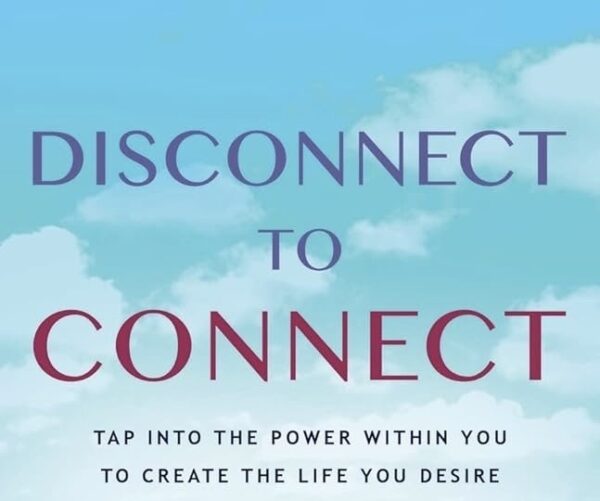
In the fast-paced digital era of 2024, where technological advancements have seamlessly integrated into every aspect of our lives, it has become more crucial than ever to pause and reflect on the impact of constant connectivity on our mental well-being. The digital detox movement, gaining momentum as a response to the overwhelming presence of technology, invites us to step back and reclaim our focus, relationships, and overall presence in the real world. This blog explores the significance of disconnecting to connect, the emergence of the 2024 social movement, and its profound effects on the mental health of teenage kids and young adults.
Disconnecting to Connect:
In a world dominated by screens and notifications, disconnecting to connect has become a revolutionary act. The digital detox movement encourages individuals to consciously step away from their devices, social media, and virtual engagements to reconnect with the tangible world around them. By doing so, people aim to rediscover the joy of face-to-face interactions, nature, and self-reflection. It’s about finding a balance between the benefits of technology and the need for genuine, in-person connections.
The 2024 Social Movement:
The year 2024 marks the zenith of the social movement advocating for a mindful approach to technology use. This movement isn’t about rejecting technology entirely but rather about creating a harmonious coexistence. Communities are coming together to organize digital detox challenges, workshops, and events, emphasizing the importance of reclaiming our time, attention, and mental well-being from the digital realm.
Mental Effects on Teenage Kids and Young Adults:
The impact of constant digital exposure on the mental health of teenagers and young adults cannot be overstated. Social media, in particular, has been linked to increased feelings of anxiety, depression, and loneliness among this demographic. The pressure to curate a perfect online persona, coupled with the fear of missing out (FOMO), contributes to a toxic digital environment. The 2024 social movement recognizes the urgency of addressing these issues and aims to empower the younger generation to take control of their digital lives.
The Importance of Mindful Tech Use:
As part of the movement, there is a growing emphasis on fostering a culture of mindful tech use. This involves setting boundaries, such as designated screen-free times, implementing digital curfews, and actively engaging in activities that promote mental well-being. By incorporating these practices into daily life, individuals can cultivate a healthier relationship with technology and mitigate the negative effects associated with excessive screen time.
Reclaiming Presence:
Reclaiming presence in the digital age is a revolutionary act of self-care and societal transformation. The 2024 social movement serves as a beacon, guiding individuals toward a more balanced and fulfilling relationship with technology. By disconnecting to connect, we can rediscover the beauty of genuine human connections, cultivate mindfulness, and create a world where the benefits of technology enhance rather than detract from our overall well-being.
Cleansing the Noise:
In the midst of the 2024 social movement, the call to reclaim presence is more relevant than ever. By disconnecting from the digital noise, individuals can rediscover the richness of the physical world, strengthen relationships, and safeguard their mental health. As we navigate the ever-evolving landscape of technology, let us embrace a mindful approach that allows us to harness the power of connectivity without sacrificing the essence of human connection.
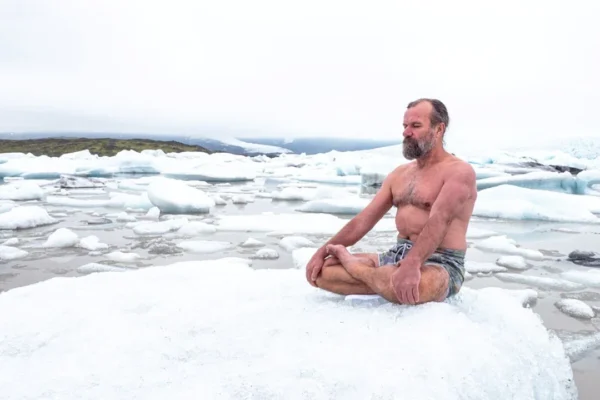
In the realm of unconventional wellness practices, the Wim Hof Breathing Method stands out as a powerful and transformative technique that has gained widespread attention. Developed by the Dutch extreme athlete Wim Hof, this breathing method combines specific breathing patterns, cold exposure, and meditation to unlock a range of physical and mental benefits. In this blog post, we’ll delve into the details of the Wim Hof Breathing Method, exploring how it works and the potential benefits it offers.
Understanding the Wim Hof Breathing Method:
At its core, the Wim Hof Breathing Method involves a series of deep, rhythmic breaths followed by a period of breath retention. The technique typically consists of three main phases:
- Breathing Exercise:
– Find a comfortable space to sit or lie down.
– Inhale deeply through the nose, filling the lungs with air.
– Exhale forcefully and completely through the mouth.
– Repeat this cycle for about 30 breaths.
- Retention Phase:
– After the final exhalation, take a deep breath in and let it out completely.
– Hold your breath for as long as you can comfortably manage.
– When you feel the urge to breathe again, take a deep breath and hold it for 15 seconds.
– Exhale and resume normal breathing.
- Cold Exposure:
– Incorporating cold exposure, such as ice baths or cold showers, is a key component of the Wim Hof Method.
– The cold exposure is believed to enhance the benefits of the breathing exercises, promoting improved circulation, reduced inflammation, and increased resilience.
How It Works:
The Wim Hof Breathing Method is based on the principles of controlled hyperventilation and conscious breath retention. The deep, rhythmic breathing helps to oxygenate the body, alkalize the blood, and activate the parasympathetic nervous system. This, in turn, can lead to a range of physiological and psychological effects, including:
- **Increased Energy Levels:**
– The enhanced oxygen intake may boost energy levels and reduce feelings of fatigue.
- Improved Immune Function:
– Wim Hof’s method has been associated with improvements in immune function, possibly due to reduced inflammation and increased production of anti-inflammatory cytokines.
- Enhanced Mental Clarity:
– Practitioners often report improved focus, concentration, and mental clarity after engaging in the breathing exercises.
- Stress Reduction:
– The method activates the parasympathetic nervous system, promoting relaxation and reducing stress levels.
- Mind-Body Connection:
– The combination of breathwork, cold exposure, and meditation fosters a stronger mind-body connection, empowering individuals to better regulate their responses to various stressors.
Conclusion:
While the Wim Hof Breathing Method has garnered considerable following and anecdotal evidence of its benefits, it’s essential to approach it with an understanding of individual variations and potential contraindications. Individuals with certain medical conditions should consult with healthcare professionals before incorporating the method into their routine.
Whether you’re seeking increased vitality, improved mental resilience, or a holistic approach to well-being, the Wim Hof Breathing Method offers a unique and accessible avenue to explore. As with any wellness practice, consistency and mindfulness are key, allowing individuals to discover the transformative potential within their own breath.
In a world driven by innovation and a relentless pursuit of optimal well-being, the concept of biohacking is steadily making its way into the mainstream. Once confined to the realms of Silicon Valley and scientific laboratories, biohacking is now emerging as a household term, poised to redefine how we approach health and performance.
Biohacking, at its core, is the art and science of optimizing one’s biology for peak performance. It encompasses a diverse range of practices, from personalized nutrition and sleep optimization to wearable technology and genetic testing. As we navigate the ever-evolving landscape of wellness, the gradual integration of biohacking into mainstream consciousness prompts us to consider: Are we on the brink of a paradigm shift in how we view and manage our health?
The allure of biohacking lies in its individualized approach, acknowledging that each person’s biology is unique. As more people recognize the potential to unlock their full potential through tailored interventions, biohacking transcends its niche origins, becoming a catalyst for a broader movement towards proactive health optimization.
In 2024, biohacking isn’t just a buzzword; it’s a transformative force shaping the future of personalized well-being, where the intersection of science and everyday life empowers individuals to become architects of their own vitality.

